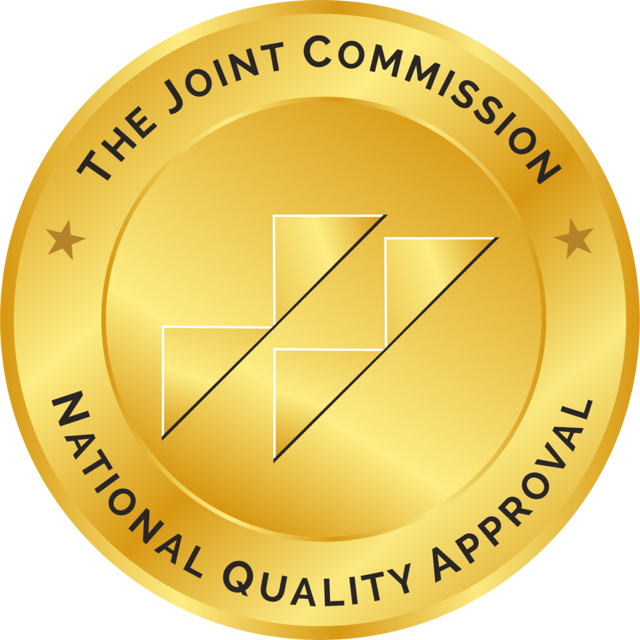
Nutrition Solutions to Improve Therapy for Dialysis Patients
Protein Energy Wasting (PEW): Factors in Chronic Kidney Disease (CKD)
PEW is a frequent complex complication of CKD Stage 5 Dialysis (CKD-5D) whose origins can be attributed to the progression of CKD as well as consequent to CKD-5D. Several contributing factors to PEW include (but are not limited to): decreasing glomerular filtration rate (GFR) with retention of uremic toxins altering appetite and consequent decreased nutrient intake, micronutrient deficiencies, inflammation, co-morbid conditions, metabolic acidosis, and imposed protein intake limitations in CKD. Low protein intake (nPNA/nPCR) has demonstrated strong association to adverse outcomes in CKD. (1) Once on maintenance dialysis, protein and energy requirements increase and catabolic effects of the dialysis procedure induce loss of amino acids and protein resulting in negative nitrogen balance. In contrast to the increased nutritional needs, it appears the actual protein intake of patients whether receiving maintenance hemodialysis (MHD) or peritoneal dialysis (PD) remains suboptimal. (1,2)
Interpreting Serum Albumin
Low albumin may be difficult to interpret whether it represents a marker of inflammation (negative acute phase response), or malnutrition (inadequate intake), or is a marker of co-existing inflammation and malnutrition. Studies have demonstrated both low protein intake and a high state of inflammation may be associated with low albumin and that inflammation and protein intake have opposing effects on serum albumin. (3,4) Randomized controlled trials have demonstrated that low albumin can be evidenced where inflammation is not present and that albumin can improve in the face of inflammation. (5,6)
Albumin: Mortality, Hospitalization and Re-Hospitalization
The biochemical marker serum albumin as a component of PEW in CKD-5D has consistently been shown to be a strong independent marker of outcomes over the past several decades. One recent large scale observational study (n=135,545) utilizing USRDS data to examine factors associated with hospitalization for infection among Medicare beneficiaries starting HD between 2005-2008, determined that compared to a reference group of patients with albumin >4.0g/dL, patients with albumin of <3.5g/dL at dialysis initiation had more than 20% increase in the rate of infection-related hospitalization.(7) Another recent study (n=349) was reviewed to identify factors predictive of a 30-day re-hospitalization in HD patients. In this study, patients with an albumin <3.3/dL were associated with higher readmission rates. (8) According to the 2017 USRDS data report, hospitalization represents a significant societal and financial burden, accounting for approximately 33% of total Medicare expenditures for dialysis patients. (9) Additionally, 35% of dialysis patients have an unplanned re-hospitalization within 30 days of discharge and re-hospitalization rates for dialysis patients are more than double that of older Medicare beneficiaries without a diagnosis of kidney disease (35.2% vs. 15.4%).
Addressing and Treating PEW
Regardless of the reason for low albumin, studies addressing prevention and treatment of low albumin remain paramount due to strong association with outcomes such as mortality, hospitalization, re-hospitalization and their associated costs. Studies have demonstrated in both HD and Peritoneal Dialysis (PD) patient populations that small incremental increases of albumin are associated with better outcomes. (10,11) Expert key opinion leaders in renal nutrition research have developed an algorithm inclusive of oral nutrition supplements and enteral and parenteral therapies (inclusive of Intradialytic Parenteral Nutrition (IDPN) and Intraperitoneal nutrition (IPN)).(12) These therapies have demonstrated to be effective in increasing albumin and promoting positive nitrogen balance and protein synthesis. (6,13-20) The CMO’s of the largest dialysis chains in the U.S. have also proposed an algorithm, similar to the one proposed by renal nutrition research experts, which addresses malnutrition, and offers support for the use of additional IDPN therapy. This can be found in literature published by other large organizations which are recognized as having expertise in both renal and nutrition support. (21,22,23)
We have been using your IDPN products at Pentec Health for the last 2 years and have been completely satisfied with the product and the customer service. You have been extremely helpful and professional in accomplishing our standards of service excellence to our patients in our facility.
— Nancy T., Facility Administrator Large Dialysis Organization
IDPN and IPN Therapy
Every patient has distinctive nutritional needs and intradialytic parenteral nutrition (IDPN) is unique as each formula is based on specific needs of the individual patient. IDPN is covered by most commercial insurance plans and is not part of a bundled payment.
Our experts strive to determine the optimal treatment dose so that protein malnourished patients receive the customized formulation best suited to meet the individual patient needs.
IDPN Formulas
Pentec Health provides uniquely tailored, patient specific IDPN formulations designed to replenish protein losses while minimizing fluid and dextrose content.
IPN for PD Patients
Pentec Health provides Intraperitoneal Parenteral Nutrition (IPN) therapy for the peritoneal dialysis patient. The formulas are designed to replenish protein losses seen during peritoneal dialysis, along with dextrose reduction and providing dialysis.
Have A Patient Referral?
References
- Kovesdy C, Shinaberger C, Kalantar Zadeh K. Epidemiology of nutrient intake in ESRD Semin Dial. 2010 ; 23: 353–358.
- Ikizler TA. Nutrition support for the chronically wasted or acutely catabolic chronic kidney disease patient. Semin Nephrol. 2009; 29:75-84.
- Y. Kim _ M. Z. Molnar _ M. Rattanasompattikul et al. Relative contributions of inflammation and inadequate protein intake to hypoalbuminemia in patients on maintenance hemodialysis. Int Urol Nephrol. 2013 Feb;45:215-27
- Kaysen G, Chertow G, Adhikarla R. et al. Inflammation and dietary protein intake exert competing effects on serum albumin and creatinine in hemodialysis patients, Kidney International, Vol. 60 (2001), pp. 333–340
- Leon J, Albert J, Gilchrist G et al. Am J Kidney Dis. 2006;48:28-36
- Cano NJ, Fouque D, Roth H, Aparicio M, et al. Intradialytic parenteral nutrition does not improve survival in malnourished hemodialysis patients: a 2-year multicenter, prospective, randomized study. J Am Soc Nephrol. 2007;18:2583-91.
- Dalrymple LS, Mu Y, Nguyen DV, Romano PS, Chertow GM, Grimes B, Kaysen GA, Johansen KL. Risk Factors for Infection-Related Hospitalization in In-Center Hemodialysis. Clin J Am Soc Nephrol. 2015;10(12):2170-2180.
- Flythe JE, Katsanos SL, Hu Y, Kshirsagar AV, Falk RJ, Moore CR. Predictors of 30-Day Hospital Readmission among Maintenance Hemodialysis Patients: A Hospital's Perspective. Clin J Am Soc Nephrol. 2016;11(6):1005-1014.
- U.S. Renal Data System, USRDS 2017 Annual Data Report: Atlas of Chronic Kidney Disease and End Stage Renal Disease in the United States, National Institutes of Health, National Institute of Diabetes and Digestive and Kidney Diseases, Bethesda, MD 2017
- Chiu PF. Tsai CD, Wu CL et al. Trajectories of serum albumin predict survival of peritoneal dialysis patients: a 15 year follow-up study. Medicine 2016;95:1-7
- Mak R, Ikizler A, Kovesdy P et al. Wasting in chronic kidney disease. J Cachexia Sarcopenia Muscle. 2011;9-25.
- Kalantar Zadeh K, Cano N, Budde K et al. Diets and enteral supplements for improving outcomes in chronic kidney disease Nature Reviews Nephrology 2011;7:369-384
- Hiroshige K, Iwamoto K, Kabashima N. Prolonged use of intradialysis parenteral nutrition in elderly malnourished chronic hemodialysis patients. Nephrology Dialysis Transplantation. 1998; 13:2081-2087.
- Korzets A, Azoulay O, Ori Y, et al. The use of intradialytic parenteral nutrition in acutely ill haemodialyzed patients. Journal of Renal Care. 2008; 34:14-18.
- Dezfuli A, Scholl D, Lindenfeld S, et al. Severity of hypoalbunemia predicts response to intradialytic parenteral nutrition in hemodialysis patients. J Ren Nutr. 2009; 19:291-297.
- Chertow G, Lazarus JM, Lyden ME et al Laboratory surrogates of nutritional status after administration of intraperitoneal AA based solutions in ambulatory peritoneal dialysis patients. Journal of Renal Nutrition 1995;5:116-123
- Tjiong HL, Vanden Berg JW, Wattimena JL et al. Dialysate as food: combined amino acid and glucose dialysate improves protein anabolism in renal failure patients on automated peritoneal dialysis. J Am Soc Nephrol. 2005; 16:1486-93
- Pupim L, Flakoll, P, Brouilette Intradiaytic parenteral nutrition improves protein and energy homeostasis in chronic hemodialysis patients. J Clin Invest. 2002 110: 483-492
- Tjiong HL, Vanden Berg JW, Wattimena JL et al. Dialysate as food: combined amino acid and glucose dialysate improves protein anabolism in renal failure patients on automated peritoneal dialysis. J Am Soc Nephrol. 2005; 16 (5): 1486-93
- Pupim L, Flakoll P, Brouilette . Nutritional supplementation acutely increases albumin fractional synthetic rate in chronic hemodialysis patients. J Am Soc Nephrol. 2004 15: 1920-1926
- Parker T, Johnson D, Nissenson A, Creating an open dialogue on improving dialysis care: part 1 nutrition. Nephrol News Iss. 2013;27:22-24.
- Worthington P, Balint J,Becktold M, et al. When is parenteral nutrition appropriate? Consensus recommendation. JPEN;2017; 41:324-377.
- [No authors listed]. K/DOQI clinical practice guidelines for nutrition in adult renal failure, National Kidney Foundation. Am J Kidney Dis. 2000; 35:S1-S140.

Proudly Quality Accredited
National Quality Approval
The Joint Commission

Accredited Practice Transition
Program With Distinction
American Nurses Credentialing Center
By using this website you accept our privacy policy. Choose the browser data you consent to allow:
